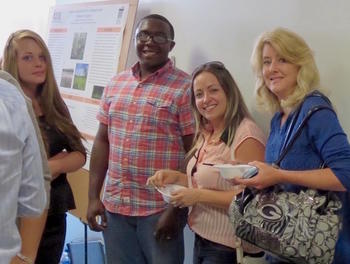
Today, Alzheimer’s-related research led by two UNC Pembroke professors and a former student has published in Scientific Reports. The study, which was funded by the Department of Defense, provides important advancement for understanding a unique, lasting brain pathology that occurs in survivors of organophosphate toxin exposure that exhibit neurological and behavioral deficits.
UNC Pembroke conducted the study to understand how such toxins affect the brain in hopes to explain why survivors of organophosphate exposure exhibit delayed neuronal injury as well as cognitive dysfunction, and to find a pathway for an effective treatment. The research team found that exposure to the organophosphate compound paraoxon causes selective and progressive compromise to those connections in the brain that are known to be vulnerable to Alzheimer’s disease, suggesting such exposure increases the risk of dementia later in life. The team's research also identified a potential self-repair pathway, one that may lead to an avenue to reduce the brain's vulnerability to cognitive decline.
The principal investigator of the research is UNC Pembroke professor Dr. Ben Bahr, who runs a laboratory with several international scientists. The lead author of the study is Karen Farizatto, Research Assistant Professor at UNC Pembroke, who completed part of her Ph.D. graduate work at the University in 2013, as part of an international program (Science Without Borders Scholarship) from Brazil. Additionally, one of the co-authors is Ronald Long, who grew up in Robeson county and was an undergraduate researcher supervised by Dr. Farizatto. He graduated from the University with a biomedical emphasis, and he continued working with Dr. Farizatto as a research technician, and currently is entering the U.S. Army.
Article Submitted by the William C. Friday Laboratory